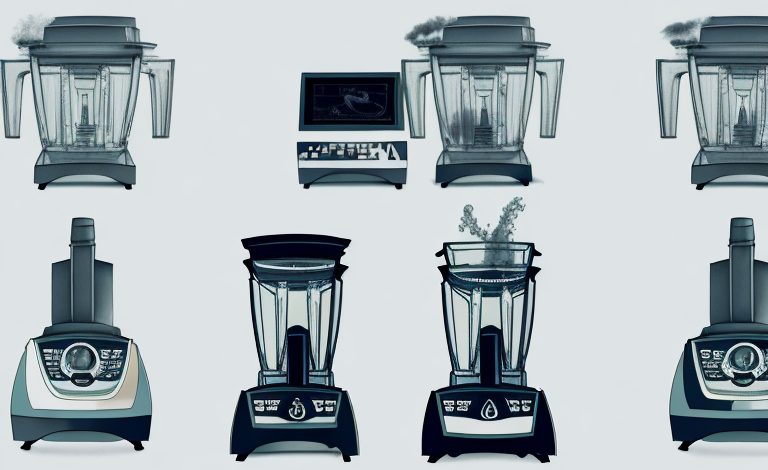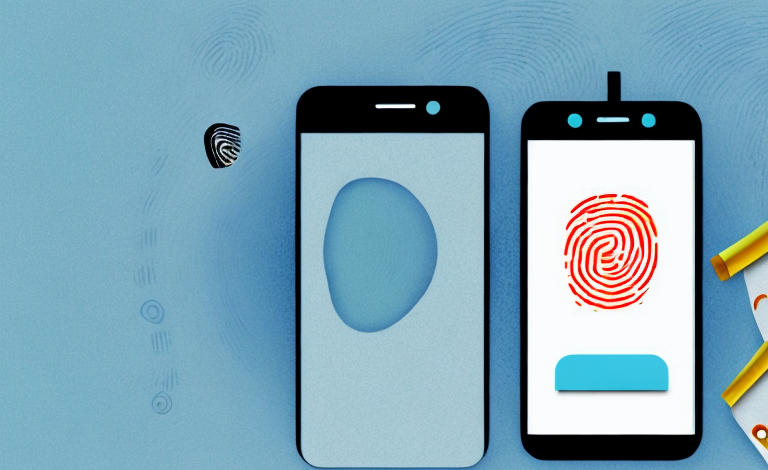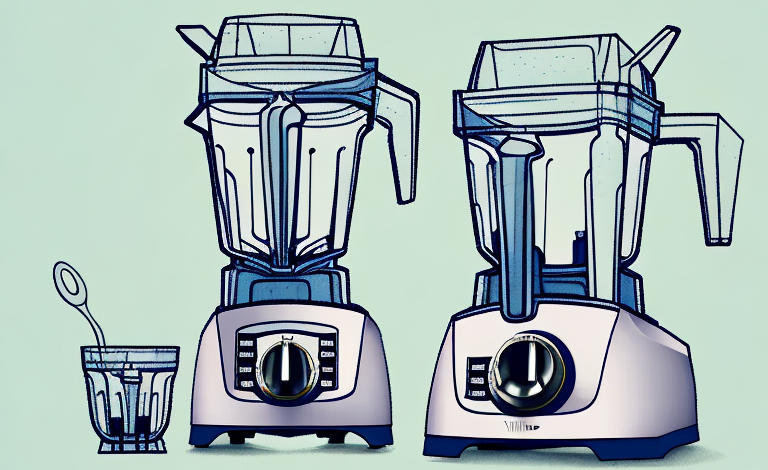As technology continues to advance, biometric authentication methods are becoming increasingly popular, and one of the most widely used methods is fingerprint authentication. The convenience and security offered by this method of identification are undeniable, but how reliable is it really? In this article, we will take an in-depth look at the basics of fingerprint authentication, its advantages and disadvantages, common misconceptions, the impact of environmental factors, and steps you can take to improve reliability. We will also examine how advances in technology are addressing the limitations of fingerprint authentication and whether there could be a better alternative in the future.
The basics of fingerprint authentication
Fingerprint authentication is a type of biometric authentication that uses the unique patterns on a person’s fingertips to verify their identity. The process of fingerprint verification involves scanning a person’s fingerprints using a special scanner that captures the ridges and valleys of the fingerprints. This information is then converted into a digital code and stored in a database. When someone wants to verify their identity, they simply present their fingers to the scanner, and the system compares the digital code of the presented fingerprints with the ones in the database. If there is a match, the person is granted access; if not, they are denied.
Fingerprint authentication is becoming increasingly popular due to its convenience and security. Unlike traditional methods of authentication, such as passwords or PINs, fingerprints cannot be easily forgotten or stolen. Additionally, each person’s fingerprints are unique, making it nearly impossible for someone to impersonate another person’s identity. Fingerprint authentication is used in a variety of settings, including smartphones, laptops, and even some government agencies. As technology continues to advance, it is likely that fingerprint authentication will become even more widespread and integrated into our daily lives.
Understanding the technology behind fingerprint authentication
Fingerprint authentication technology is based on the fact that no two fingerprints are alike. The patterns of ridges and valleys on our fingertips are unique to each individual, making fingerprint identification a highly reliable method of biometric authentication. To ensure accuracy, fingerprint authentication systems use algorithms to analyze the patterns of ridges and valleys and compare them to those in the database. These algorithms are designed to identify even the slightest variations in a fingerprint, making it extremely difficult to mimic or fool the system.
One of the advantages of fingerprint authentication is its speed and convenience. With just a touch of a finger, the system can quickly and accurately identify the user, eliminating the need for passwords or PINs. This makes it an ideal solution for applications where security is important, but time is of the essence, such as accessing secure areas or making financial transactions.
However, there are also some limitations to fingerprint authentication. For example, certain medical conditions or injuries can affect the appearance of fingerprints, making it difficult or impossible for the system to recognize them. Additionally, fingerprints can be copied or stolen, although this is rare and requires a high level of skill and access to specialized equipment. Overall, fingerprint authentication remains a highly effective and widely used method of biometric authentication in a variety of applications.
The pros and cons of using fingerprint authentication
There are several advantages to using fingerprint authentication, one of which is convenience. Unlike passwords, which can be forgotten, stolen, or easily guessed, fingerprints are always with us, and we do not need to remember them. This makes fingerprint identification fast and easy, especially for frequent users. Another advantage of this method is security. As previously mentioned, fingerprints are unique to each individual, making it difficult for someone to steal or recreate them. Finally, fingerprint authentication is user-friendly and widely accepted in many industries.
On the other hand, there are also some disadvantages to this method. One significant disadvantage is that fingerprints can be altered or damaged, making it difficult for the system to recognize them. Additionally, some medical conditions, such as certain skin conditions or injuries, can affect the consistency and quality of fingerprints. Furthermore, some people are uncomfortable using their fingerprints for identification purposes, as they may feel that their privacy is being compromised.
Another disadvantage of fingerprint authentication is that it may not be suitable for certain environments. For example, in industries where employees are required to wear gloves or work with their hands in wet or dirty conditions, fingerprint authentication may not be practical. In these cases, alternative methods of authentication, such as facial recognition or smart cards, may be more appropriate.
Despite these drawbacks, fingerprint authentication remains a popular and effective method of identification. As technology continues to advance, it is likely that the accuracy and reliability of fingerprint authentication systems will improve, making them even more secure and user-friendly in the future.
Factors affecting the reliability of fingerprint authentication
Several factors can affect the reliability of fingerprint authentication. One of the most significant factors is the quality of the fingerprint scanner. A high-quality scanner can capture even the slightest details of a fingerprint, increasing accuracy. Environmental factors, such as temperature and humidity, can also affect the quality of fingerprints and reduce accuracy. Finally, the condition of a person’s fingers, such as dryness, cuts, or burns, can also impact the recognition rate of the system.
Another factor that can affect the reliability of fingerprint authentication is the age of the person. As people age, their fingerprints can become less distinct, making it more difficult for the scanner to accurately identify them. Additionally, certain medical conditions, such as eczema or psoriasis, can cause changes to the skin on the fingers, which can also impact the accuracy of fingerprint authentication systems.
It is also important to note that the reliability of fingerprint authentication can be impacted by the quality of the database used for comparison. If the database is not up-to-date or contains errors, it can lead to false positives or false negatives. Therefore, it is crucial to regularly update and maintain the database to ensure the highest level of accuracy in fingerprint authentication.
Common misconceptions about fingerprint authentication
There are several misconceptions about fingerprint authentication, one of the most common being that fingerprints can be easily duplicated or stolen. While it is true that some methods of forging fingerprints exist, such as creating a mold or using a high-resolution photograph, these methods are not easy to execute and would require a significant amount of time and resources. Furthermore, advanced fingerprint authentication systems are designed to detect and prevent these types of attacks.
Another common misconception about fingerprint authentication is that it is not as secure as other forms of authentication, such as passwords or PINs. However, studies have shown that fingerprint authentication is actually more secure than traditional methods, as fingerprints are unique to each individual and cannot be easily guessed or hacked. Additionally, fingerprint authentication eliminates the risk of password or PIN theft, as the user’s biometric data is stored locally on the device and cannot be accessed by hackers.
The accuracy rate of fingerprint authentication compared to other biometric methods
When compared to other biometric authentication methods, fingerprint authentication has proved to be highly accurate, with an error rate of less than 1%. However, it is worth noting that the accuracy rate can vary depending on the quality of the scanner used and other factors previously mentioned.
Additionally, fingerprint authentication has the advantage of being a non-invasive method of identification, as it does not require any bodily fluids or tissues to be collected. This makes it a more hygienic option compared to other biometric methods such as iris or facial recognition.
Real-life scenarios that challenge the reliability of fingerprint authentication
While fingerprint authentication is generally considered a reliable method of identification, there are specific scenarios in which it may not be appropriate. For example, in environments where gloves or hand injuries are common, fingerprint authentication may not be suitable. Additionally, certain professions that involve handling chemicals or harsh substances may also require alternative methods to authenticate users.
Another scenario where fingerprint authentication may not be reliable is in cases of identical twins. Since identical twins share the same DNA, their fingerprints may also be very similar, making it difficult for fingerprint authentication systems to differentiate between them.
Furthermore, some medical conditions such as eczema or psoriasis can affect the texture of the skin on the fingers, which may result in inaccurate fingerprint readings. In such cases, alternative methods of authentication such as facial recognition or iris scanning may be more appropriate.
The impact of environmental factors on fingerprint recognition
Fingerprint recognition systems can be affected by environmental factors, such as temperature, humidity, and lighting. For example, high temperatures and humidity can cause fingerprints to become smudged or difficult to read, leading to a decrease in accuracy. Similarly, poor lighting conditions can make it difficult for the scanner to capture the necessary details, also reducing accuracy. However, advances in technology are addressing these limitations, and high-quality scanners designed to work in challenging environments are becoming more widely available.
In addition to environmental factors, the quality of the fingerprint itself can also impact recognition accuracy. Factors such as age, skin condition, and the presence of scars or cuts can all affect the clarity and distinctiveness of the fingerprint. This is why it is important for individuals to properly clean and dry their hands before using a fingerprint scanner, and for the scanner to be regularly maintained and calibrated to ensure optimal performance.
Steps you can take to improve the reliability of fingerprint authentication
There are several steps you can take to increase the reliability of fingerprint authentication. First, you can ensure that the scanner you are using is of high quality and regularly maintained. Second, you can regularly clean and moisturize your fingers to ensure that the quality of your fingerprints is consistent. Finally, you can store your fingerprints in multiple databases or cryptographic modules to ensure redundancy and avoid single points of failure.
How advances in technology are addressing the limitations of fingerprint authentication
As previously mentioned, advances in technology are addressing some of the limitations of fingerprint authentication. For example, new scanners can now read fingerprints through glove material, making the method more suitable for certain professions. Additionally, some systems now use a combination of biometric authentication methods, such as fingerprint and facial recognition, to increase security and reliability.
The future of biometric security: Is there a better alternative to fingerprints?
While fingerprint authentication remains a popular and reliable method of identification, there is always the potential for new and better alternatives to emerge. Some new methods being developed include vein pattern recognition, voice recognition, and facial recognition. However, each of these methods has its limitations and is not yet widely available for use. Therefore, for the time being, fingerprint authentication remains one of the most reliable and convenient methods of biometric authentication available.
Conclusion
Overall, fingerprint authentication is a reliable and secure method of biometric authentication. While there are limitations and factors that can affect its reliability, advances in technology are continuously addressing these concerns. It is essential to understand the advantages and disadvantages of this method before choosing to implement it, but overall, it is an excellent option for various industries and situations.



